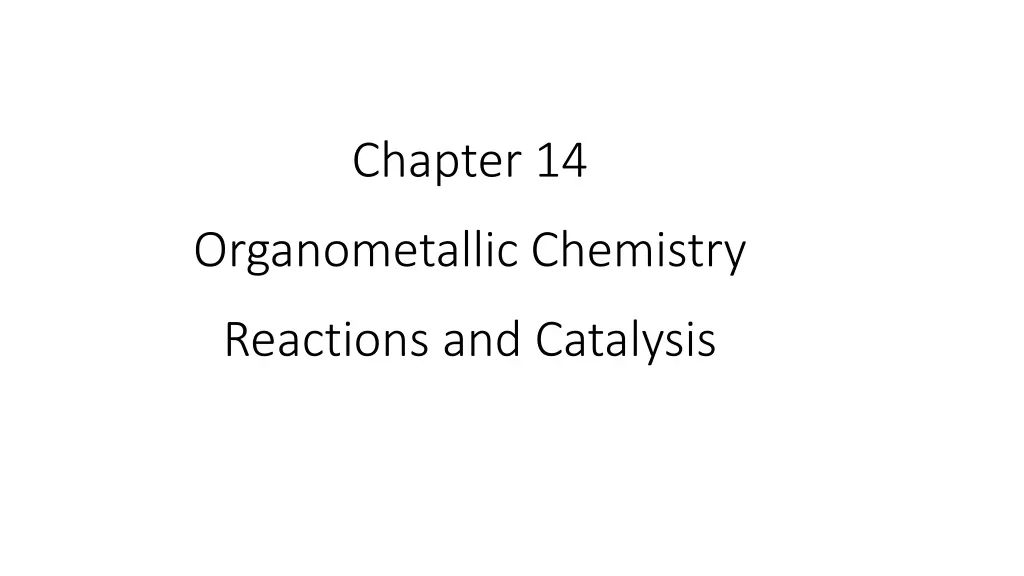
Organometallic Chemistry: Reactions, Catalysis, and Nobel Prize Discoveries
Explore a comprehensive overview of organometallic chemistry reactions, including dissociation, substitution, oxidative addition, reductive elimination, and more. Dive into the fascinating world of ligand modification, carbonyl insertion, hydride elimination, and steric vs. electronic effects in phosphine ligands. Learn about the key usefulness of reductive elimination in forming new bonds, the impact of electronic and steric effects, and the significance of Pd-catalyzed cross-coupling reactions, including the 2010 Nobel Prize discovery.
Download Presentation

Please find below an Image/Link to download the presentation.
The content on the website is provided AS IS for your information and personal use only. It may not be sold, licensed, or shared on other websites without obtaining consent from the author. If you encounter any issues during the download, it is possible that the publisher has removed the file from their server.
You are allowed to download the files provided on this website for personal or commercial use, subject to the condition that they are used lawfully. All files are the property of their respective owners.
The content on the website is provided AS IS for your information and personal use only. It may not be sold, licensed, or shared on other websites without obtaining consent from the author.
E N D
Presentation Transcript
Chapter 14 Organometallic Chemistry Reactions and Catalysis
Types of Reactions Ligand loss or gain Dissociation/Substitution Oxidative addition Reductive elimination Nucleophilic displacement Ligand modification Insertion Carbonyl insertion (methyl migration) Hydride elimination Abstraction
Types of Reactions: Dissociation, Addition and Substitution
Aside: olefin = alkene metathesis = exchange of bonds 2005 Nobel Prize
Dissociation of Phosphine Ligands: Steric vs. Electronic Effects
Types of Reactions: Oxidative Addition/Reductive Elimination
Oxidative Addition Coordination # s and Oxidation States?
Reductive Elimination: Key usefulness forms a new bond H-H, C-H, C-X (X = halide, amide, alkoxide, othes) Rates depend on electronic and steric effects. Electronic effects: more weakly bonded ligands are eliminated faster.
Steric Effects: Rate of reductive elimination as a function of other ligand s bite angle
Pd-catalyzed Cross-Coupling reactions: 2010 Nobel Prize Overall Organic Reaction?
Pd-catalyzed Cross-coupling reactions Step 1? Step 2? Step 3: transmetallation substitution adding R or Ar to the Pd(II) center Step 4? Step 5?
Ligand Modification Reactions: Insertion Reactions Examples:
Ligand Modification Reactions: Carbonyl Insertion Possible Mechanisms: Propose mechanisms and examine experimental results.
Which mechanism is best supported? 1. Analyze Mechanism 1. Is this a plausible mechanism? 2. Compare Mechanisms 2 and 3. Which is better supported by the evidence.
Hydride Elimination (-elimination) What is the reverse reaction?
Turnover Frequency http://pubs.acs.org/doi/pdf/10.1021/om100552h Turnover Number: http://pubs.acs.org/doi/abs/10.1021/om060605p






















